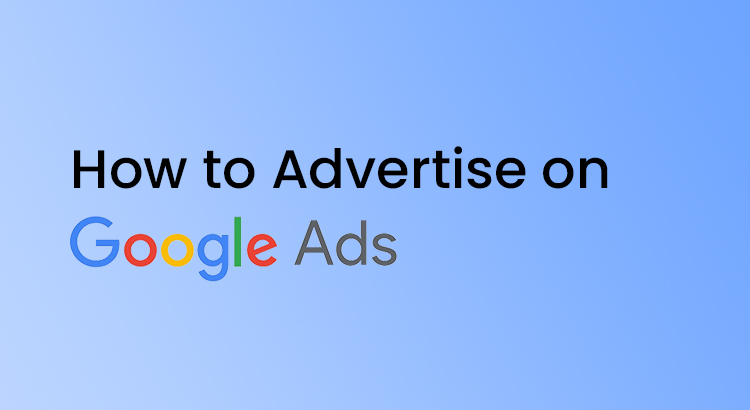Google Ads stands as a beacon of opportunity for businesses striving to amplify their online presence. This article delves into how to advertise on Google Ads, explaining the importance, functioning, and steps involved in creating effective ad campaigns.
Why Is Google Ads Important?
Google Ads, formerly known as AdWords, holds paramount significance in contemporary marketing strategies due to several compelling reasons:
1. Speedy Results
Unlike SEO, which requires time to yield results, Google Ads propels businesses to the forefront of search engine results pages (SERPs) swiftly, garnering immediate visibility.
2. Brand Awareness
Beyond driving traffic and conversions, Google Ads serves as a potent tool for brand exposure. Studies indicate a notable surge in brand recall rates, thereby solidifying brand presence in the digital landscape.
3. Gmail Inbox Outreach
Integration with Gmail enables advertisers to extend their reach to potential customers through personalized ads within Gmail inboxes, enriching email marketing endeavors.
4. Remarketing Capabilities
Leveraging Display Remarketing and Remarketing Lists for Search Ads (RLSA), Google Ads facilitates reconnecting with website visitors, nurturing prospects who previously engaged but didn’t convert.
5. Measurable Performance
Unlike traditional advertising channels, Google Ads provides comprehensive metrics, enabling precise measurement of campaign effectiveness, ROI assessment, and informed decision-making.
6. Integration with Google Analytics
Seamlessly integrating Google Ads with Google Analytics furnishes deeper insights into user behavior post-click, empowering advertisers to refine strategies based on actionable data.
7. Competitive Edge
By monitoring competitors’ strategies and adapting to market dynamics in real-time, businesses can outmaneuver rivals, capitalize on emerging opportunities, and differentiate their offerings effectively.
How Advertising on Google Works?
Advertising on Google entails a structured process:
- Ad Creation: Crafting diverse ad formats via the Google Ads platform.
- Keyword Bidding: Strategic bidding on keywords, audiences, or placements to secure prominent ad placements.
- Payment Model: Advertisers pay per click (PPC), ensuring cost-effectiveness as expenditure correlates directly with user engagement.
- Click-Through Rate (CTR) Optimization: Enhanced CTR enhances ad performance, potentially reducing Cost-Per-Click (CPC) and maximizing ROI.
- Conversion Optimization: Effective landing pages or websites complement Google Ads, fostering conversions and bolstering Return on Ad Spend (ROAS).
While Google Ads offers immense potential, meticulous campaign management is imperative to navigate potential pitfalls and optimize outcomes continually.
How to Advertise on Google?
The steps to advertise on Google Ads are listed below. You can use them to do it by yourself or you can get help from a PPC expert.
Step 1: Switch to Expert Mode
Navigate to ads.google.com, click “get started,” and opt for “Switch to expert mode” to bypass Smart campaigns. This enables customized campaign creation tailored to specific business objectives.
Step 2: Pick Your Campaign Type
Choose from diverse campaign types including Search, Display, Video, Shopping, App, Discovery, Local, or Performance Max, depending on your marketing goals and target audience.
Step 3: Set Up the Campaign
Define campaign settings such as name and network preferences. Customize parameters like ad schedule and geographical targeting to optimize audience reach and engagement.
Step 4: Set Your Ad Schedule
Specify ad display timings to align with peak user activity periods, maximizing ad visibility and potential conversion opportunities. Utilize advanced settings to fine-tune scheduling for optimal results.
Step 5: Specify Location & Language
Refine audience targeting by selecting specific locations and languages to ensure ads reach relevant demographics, enhancing campaign effectiveness and engagement rates.
Step 6: Calculate Your Daily Budget
Determine an appropriate daily budget based on keyword research and industry benchmarks. Strike a balance between investment and returns to optimize campaign performance and resource utilization.
Step 7: Choose Your Bid Strategy
Select between manual or automated bidding strategies to manage CPC bids effectively. Tailor bid strategies to align with campaign objectives and maximize ROI while maintaining control over spending.
Step 8: Set Up Your Keywords
Identify relevant keywords and match types to optimize ad targeting and relevance. Organize keywords into thematic ad groups for streamlined campaign management and improved performance.
Step 9: Create Your Ad
Craft compelling ad copies with clear messaging and engaging visuals to capture audience attention and drive clicks. Ensure alignment with campaign objectives and target audience preferences.
Step 10: Add On Your Ad Extensions
Enhance ad visibility and functionality by incorporating extensions like sitelinks and callouts. These additional features of Google Ads enrich ad content, improving CTR and overall campaign performance.
Step 11: Device Targeting and Extras
Refine audience targeting by adjusting bid adjustments for different devices. Explore additional settings to optimize campaign performance and refine audience targeting strategies.
Step 12: Don’t Forget Your Landing Page
Optimize landing pages for seamless user experience and improved conversion rates. Focus on technical aspects, CTAs, and design to ensure landing pages align with ad messaging and drive desired actions.
Step 13: Set Your Ad Live
Finalize billing information and launch the campaign to set ads live. Monitor performance metrics and make necessary adjustments to optimize campaign outcomes and achieve marketing objectives.
Conclusion of How to Advertise on Google Ads
Advertising on Google Ads presents a powerful opportunity for businesses to amplify their online presence and drive targeted traffic. By following the steps, advertisers can harness the full potential of Google Ads.


